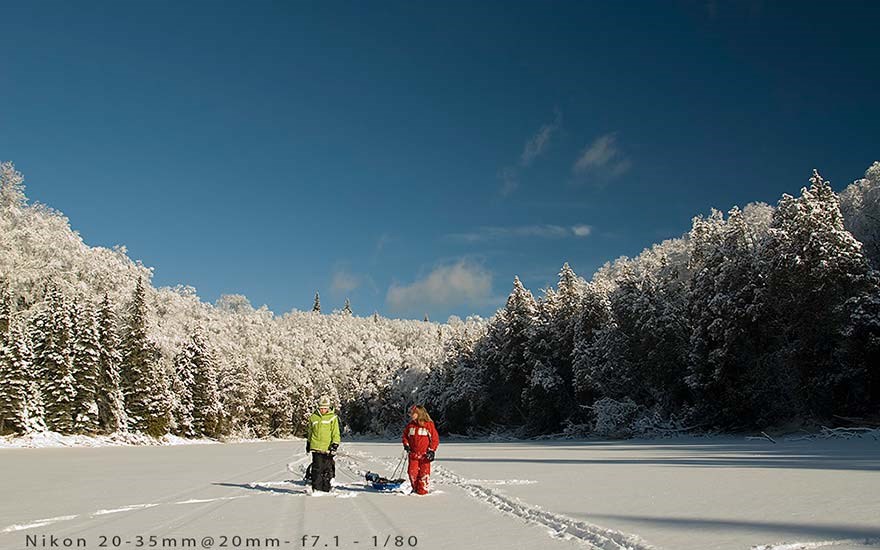The first step to getting great winter shots is to actually get outside with our camera. This means dressing for the conditions so we are comfortable and can appreciate the dramatic changes that the descent of winter brings to the landscape.
One of the most important technical things to consider when photographing snowy landscapes is the predominance of white. The brightness of the snow tends to trick our camera into under exposing winter scenes – and the bright picture we see through our view finder turns out dull and gray.
We can address this by overexposing anywhere from .3 to 1.7 f-stops. How much we over expose depends on the conditions but experimenting with exposure is key to capturing cool winter images.
Sometimes it’s simply a cold, clear, still morning that produces great conditions for photography. I popped out of my ice fishing shack to shoot an image of fellow anglers. The sharp angle of the early morning light helps to define the snow-drifted-surface of the lake.
Second-guessing our camera under exceptional conditions and fiddling with exposures to get the image we want is another theme we’ll explore at the Superior Woods and Waters Photography Workshop coming up in early June.
- James Smedley
Read the full article about winter photography.
